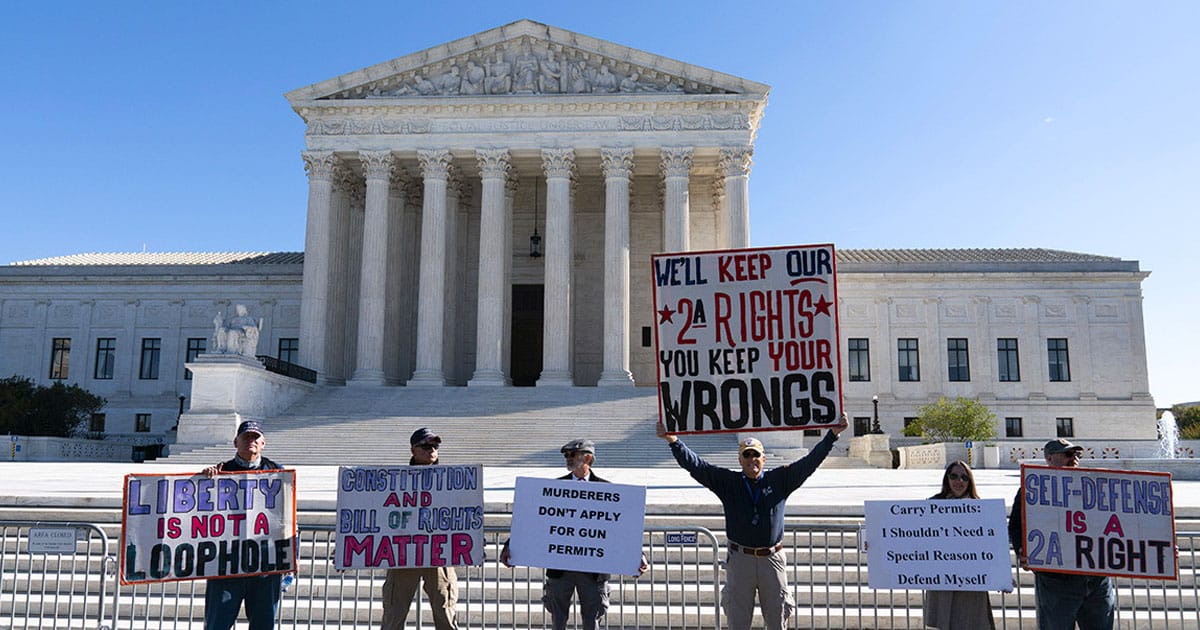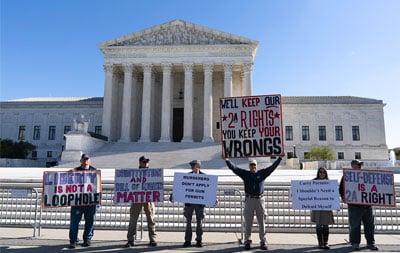 Another Second Amendment case will be heard by the U.S. Supreme Court, but this new litigation bears an unusual hallmark. It was neither brought by gun rights advocates nor supported by these organizations.
Another Second Amendment case will be heard by the U.S. Supreme Court, but this new litigation bears an unusual hallmark. It was neither brought by gun rights advocates nor supported by these organizations.
It will, however, be worth noting how justices rule on yet another case involving gun control.
Already three have been ruled upon in the last three years, including 2022’s New York State Rifle and Pistol Association v. Bruen that redrew the landscape of deciding the law concerning firearms. It will undoubtedly have a strong bearing on how this newest case is adjudicated.
United States v. Rahimi came from the conviction of a Texas man, Zachary Rahimi, who confessed to having weapons in violation of a restraining order. The mother of his child filed for the order because of “family violence.”
Rahimi was suspected of committing several crimes, including multiple shootings, and law enforcement searched his home. The Department of Justice reported that the suspect was accused of at least five separate shootings in a six-week period in December 2020 and January 2021.
Clearly not a model citizen, Rahimi was accused of shooting in the air at a Whataburger due to his associate’s credit card being declined. He allegedly shot at someone he is suspected of selling Percocet to and yet another person in a road rage dispute.
Any or all of these charges would have led to Rahimi losing his Second Amendment privileges if found guilty, and rightfully so. No reasonable person disputes this. But that’s not what is coming before nine Supreme Court justices.
The only charge they must consider concerns his losing his weapons due to being under a domestic violence restraining order.
This action, the Fifth Circuit found, was not aligned with the nation’s “historical tradition” of gun laws as demanded by the Bruen ruling. Judge Cory T. Wilson wrote that the government did not prove that the restriction of Rahimi’s gun rights was within that tradition of U.S. law.
This decision reversed previous rulings by the Fifth Circuit where convictions under the law prohibiting weapons possession by persons under restraining orders were upheld. Wilson noted this and admitted that protecting endangered persons was part of previous decisions.
However, he wrote that “Bruen forecloses any such analysis in favor of a historical analogical inquiry into the scope of the allowable burden on the Second Amendment right.”
The court went on to declare the law under which Rahimi was convicted unconstitutional and vacated his sentence.
The Fifth Circuit considered previous laws, such as those intended to strip minorities of their right to keep and bear arms and laws requiring the posting of cash before a suspected “dangerous” person could carry a weapon in public. It decided, however, that there was not a parallel with historical tradition and the current case before the court.
The Supreme Court will have its hands full with this matter. A concurring opinion by Judge James C. Ho asserted that there were other ways of keeping weapons out of the hands of dangerous individuals than by nullifying the Second Amendment based on restraining orders.
He said that the Founding Fathers knew well that certain people convicted of crimes would lose their liberties, including the right to keep and bear arms.
However, Ho charged that the government’s attempts to disarm dangerous individuals must be “consistent with the fundamental protections that our Constitution affords to those accused of a crime.”
There are very good reasons Second Amendment advocacy groups have stayed far away from this case. The high court has a thorny issue to decide, and it must do so without trampling the rights of individuals as guaranteed by the Constitution.
Still, every reasonable person agrees that violent individuals who are shown to be a threat to others should not be armed. It will be fascinating to see how this court ultimately decides United States v. Rahimi.

